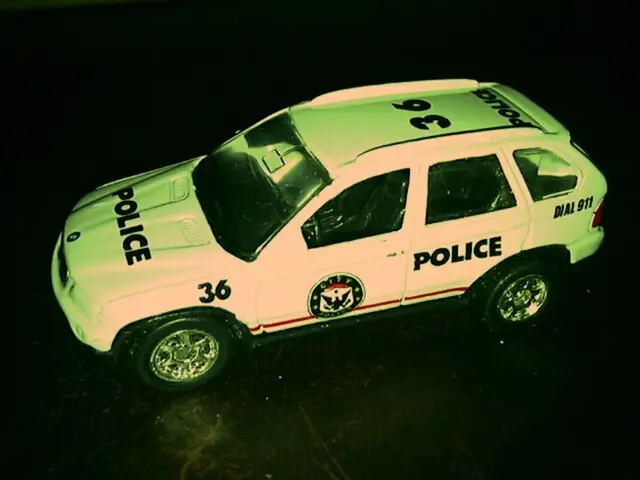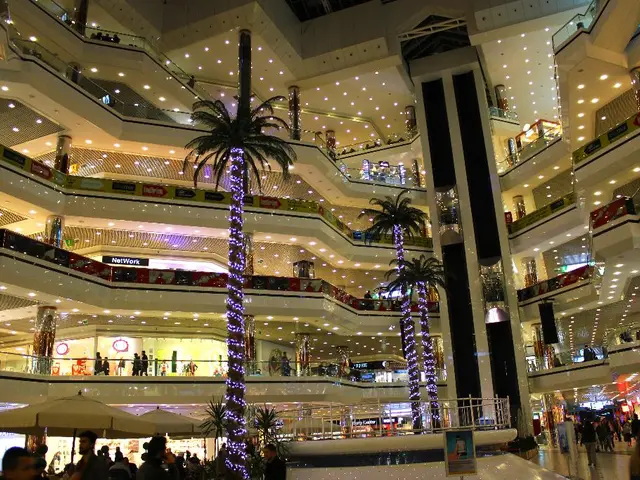Delivery Drones Transport Supplies to Mount Everest Summit
Title: Revolutionized Cargo Transport and Waste Management on Mt. Everest with Drones
Facebook Twitter WhatsApp Email Print Copy Link
Mt. Everest, the world's tallest mountain, is no longer just a site for measurement and filming. This colossal peak now welcomes an unlikely ally in facilitating waste removal and cargo transportation—drones. Employed by Sherpas and porters, these devices are transforming the challenging terrain around Mt. Everest, bringing work safety, cost-effectiveness, and increased efficiency to the realm of high-altitude mountain climbing.
In the Nepalese capital, Kathmandu, Raj Bikram Maharjan, CEO of Airlift Technology, expresses their drones' utility, "Our drones carry ladders, turtles, ropes, and oxygen bottles. What used to take Sherpas seven hours now takes seven minutes." FlyCart 30 cargo drones, developed in China, fly between the base camp and Camp 1, located above 6,000 meters, enabling Sherpa teams to support climbers aiming to reach Everest's summit every year.
The use of drones reduces the number of trips through the infamous Khumbu Icefall, a dangerous zone filled with ice towers and crevasses. These new flyers not only carry essential cargo but also help clean up the mountain by transporting hazardous waste. The collaboration between the Khumbu Pasang Lhamu municipality and the Chinese manufacturer DJI led to the introduction of these drones for waste disposal, which, following successful trials in spring 2024, were later taken over by Airlift. The municipality and the Sagarmatha Environmental Protection Committee still support the drone operation, prioritizing maintaining the Khumbu Glacier's passageability and waste removal on Everest and Ama Dablam.
The DJI drone can transport up to 40 kg of cargo for nine minutes on battery power or 30 kg in 18 minutes with double batteries, although performance decreases at higher altitudes. Despite these limitations, their deployment is on the rise. In the previous season, many drones delivered oxygen bottles to Camp 1 and returned with waste. This season, they were also employed to map the Khumbu Icefall and discover new routes. "We can now create 3D mappings to determine the locations and depths of crevasses," Maharjan explains.
In recent decades, climbers have relied on traditional methods of transport, such as human porters, donkeys, and yaks. However, the integration of drone technology has given mountaineering a modern twist. Though the costs associated with acquiring a drone might be high, averaging around $50,000 per unit, entrepreneur Maharjan foresees a drone boom on Everest and the rest of the Himalayas.
It is essential to consider the potential drawbacks of using drones, including technical challenges, payload restrictions, regulatory and airspace issues, and dependance on skilled operators. Nonetheless, mountaineers and expedition organizers welcome the benefits they bring, as Lukas Furtenbach, an expedition organizer, explains, "With every load they can drag up, they reduce the back and forth of labor through the dangerous Khumbu Icefall."
- In addition to revolutionizing waste management and cargo transport on Mount Everest, drones are also finding a place in the lifestyles of outdoor enthusiasts and homeowners, with their utility extending to home-and-garden gadgets and outdoor-living technology.
- As mountaineering evolves with the integration of drone technology, it's not just the Himalayan peaks like Mount Everest that are benefitting. The convergence of sports, technology, and lifestyle is propelling a rise in the adoption of drones for different activities, from mapping landscapes for sports events to aiding in the maintenance of home gardens.
- With the growing trend of integrating technology into various aspects of life, including sports, lifestyle, home-and-garden, and outdoor-living, it's no surprise that drones – once associated primarily with military and aerial photography uses – are now being employed in tasks as diverse as waste disposal on Mount Everest to delivering groceries at home.








